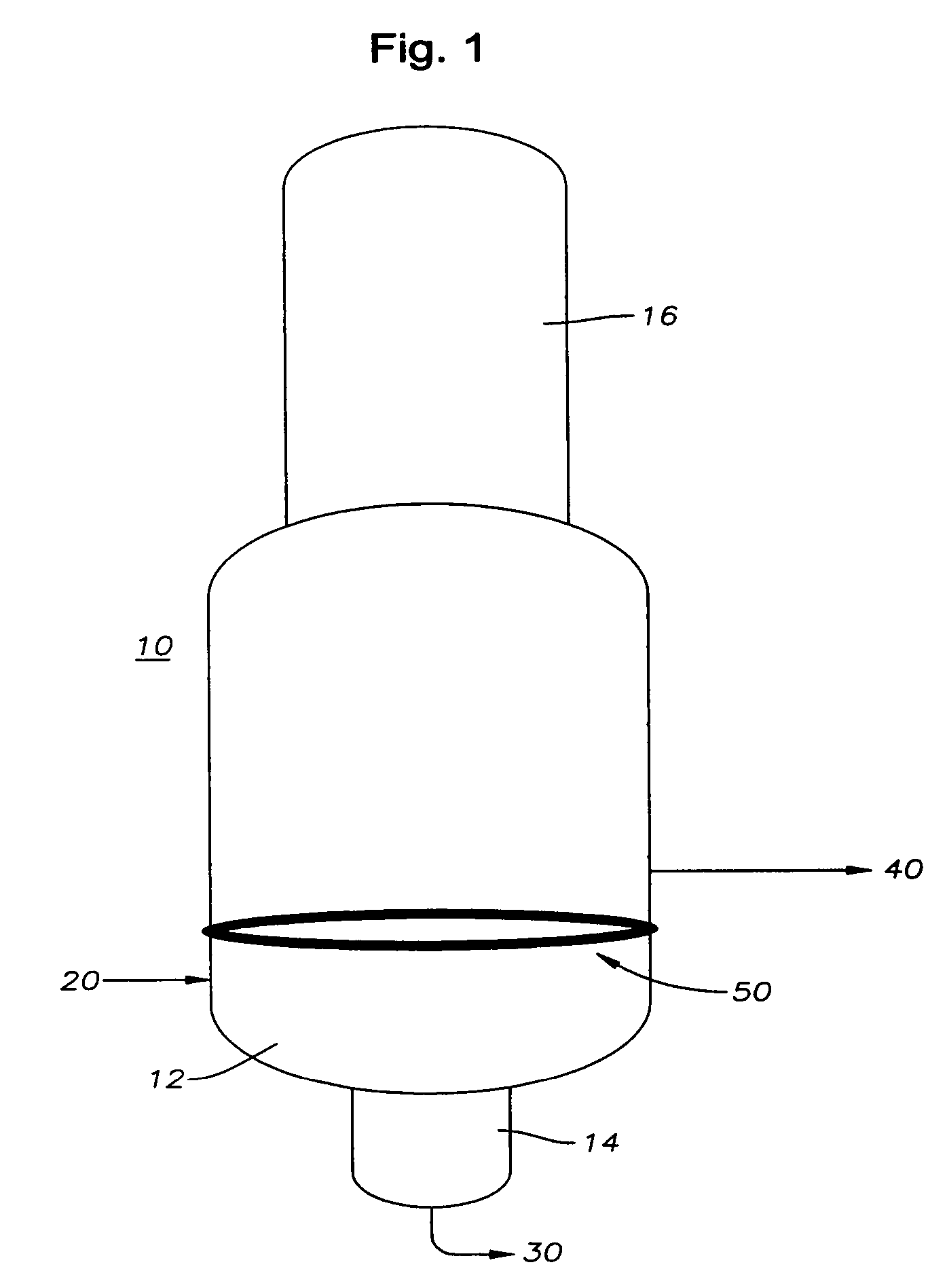VPS tar separation
a technology of vps and tar, applied in the field of tar upgrading, can solve the problems of increasing the difficulty of disposing, increasing the amount of tar produced, and incompatible sct, so as to reduce or minimize the entrainment of liquid, efficiently utilize, and efficiently use
- Summary
- Abstract
- Description
- Claims
- Application Information
AI Technical Summary
Benefits of technology
Problems solved by technology
Method used
Image
Examples
Embodiment Construction
[0026]The invention is a process for producing deasphalted steam cracker tar comprising feeding steam cracker tar to a vacuum pipestill (VPS) including a flash zone separated from a distillation zone or zone comprising distillation trays by at least one annular ring and obtaining as an overheads a deasphalted tar product and as a bottoms an asphaltenic heavy tar product.
[0027]Also according to the invention, there is a system for the upgrading of tar comprising, in series, a pyrolysis furnace fluidly connect with a primary fractionator whereby tar is obtained as a bottoms product, and a vacuum pipestill equipped with an annular entrainment device as hereinafter described. Optionally, downstream of the vacuum pipestill, is a POX and / or coker unit.
[0028]Crude, as used herein, means whole crude oil as it issues from a wellhead, optionally including a step of desalting and / or other steps as may be necessary to render it acceptable for conventional distillation in a refinery. Crude as us...
PUM
| Property | Measurement | Unit |
|---|---|---|
| temperature | aaaaa | aaaaa |
| boiling point | aaaaa | aaaaa |
| temperature | aaaaa | aaaaa |
Abstract
Description
Claims
Application Information
 Login to View More
Login to View More - R&D
- Intellectual Property
- Life Sciences
- Materials
- Tech Scout
- Unparalleled Data Quality
- Higher Quality Content
- 60% Fewer Hallucinations
Browse by: Latest US Patents, China's latest patents, Technical Efficacy Thesaurus, Application Domain, Technology Topic, Popular Technical Reports.
© 2025 PatSnap. All rights reserved.Legal|Privacy policy|Modern Slavery Act Transparency Statement|Sitemap|About US| Contact US: help@patsnap.com


